The unlikely species entangled in Ukraine's resistance to Russia
(Image credit:
Getty Images
)
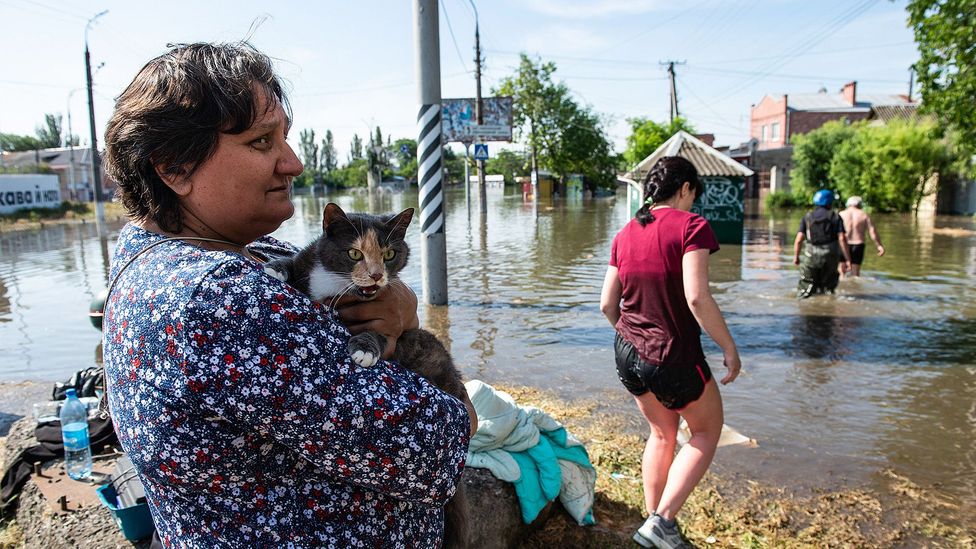
Lawsuits, art and the sandy blind mole-rat have all played a part in Ukraine’s fight for environmental justice in the wake of Russia’s invasion. But green efforts can only go so far while war rages.
I
In July 2023, I crossed into Ukraine on a night train from Poland. As usual, my evening was spent talking to other passengers. I did not mention my interest in environmental questions, preferring to listen to people’s stories, when suddenly my compartment neighbour, who was not an environmentalist, started talking about the sandy blind mole-rat.
The sandy blind mole-rat (Spalax arenarius) is an endangered species endemic to the Lower Dnipro region of southern Ukraine. The area has been occupied by Russia since February 2022, and, on 6 June 2023, the region’s Kakhovka Hydroelectric reservoir and dam collapsed, resulting in widespread flooding and destruction. Ukraine’s military and Nato blame Russia, and experts suggest the damage could be either a deliberate or an unintended consequence of the Russian occupation.
It is impossible at present to assess the full impacts of the disaster since the area remains under Russian occupation. Yet the event, which demolished houses and affected internationally significant nature sites, has been proclaimed in Ukraine as the biggest environmental catastrophe since the Chernobyl Nuclear Power Plant explosion in 1986. An estimated 18 cubic km (4.3 cubic miles) of reservoir water burst through, washing pollutants and sewage products downstream to the Black Sea, and displacing landmines. The loss of water for agricultural irrigation also hit global food security and biodiversity loss has been significant.
Amid this destruction, the population of the endemic sandy blind mole-rat is thought to have fallen by 50%. For my fellow train passengers, the animal was seen as yet another victim of Russian aggression.
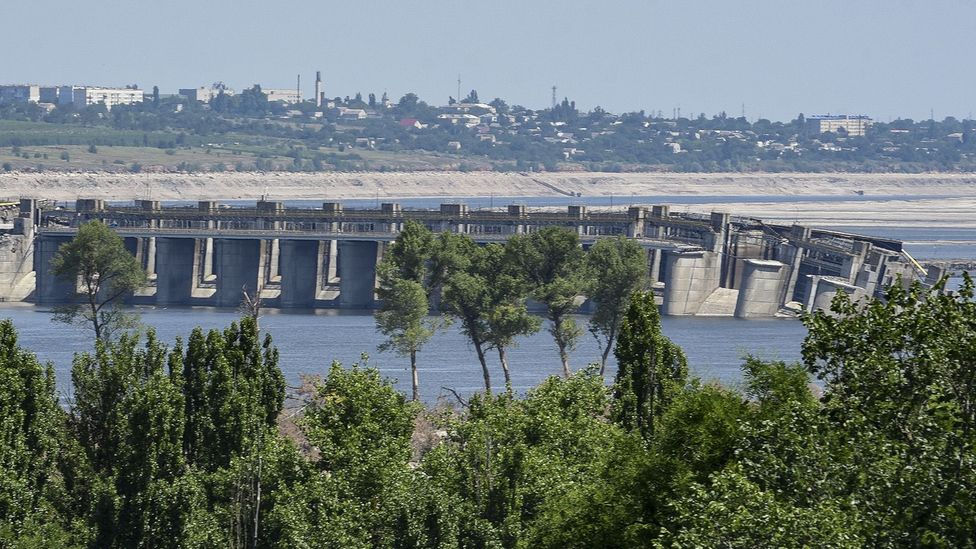
The Kakhovka dam in Ukraine was breached in the early hours of 6 June 2023 (Credit: Getty Images)
The Kherson oblast, where Kakhovka is located, is not alone among Ukraine’s environmental wartime casualties. Ukraine is now the largest mined territory in the world and around 2,000 environmentally protected areas have been under Russian occupation. The extent of environmental damage can be seen on Ecodozor, a platform developed by Zoi Environment Network, with support from the UN Environment Programme and others, to map the consequences and risks of the fighting.
The Ukrainian government is currently attempting to investigate and catalogue the harm. But destruction is perhaps not the only environmental legacy of Russia’s invasion. Even amidst the grief, calls for environmental justice have also become part of Ukraine’s resistance to Russian aggression. And slowly, via everything from government initiatives to art exhibitions, public awareness of the impacts of environmental destruction has been growing.
It’s a response that has deep roots: outrage at the environmental damage caused by the nuclear explosion at Chernobyl (or Chornobyl, which is closer to the Ukrainian pronunciation) contributed to the growing independence movements in then-Soviet Ukraine.
Yet how far can today’s ecological concern reach while war continues?
A growing environmental awareness
When I was in Ukraine this past summer, interviewing people for my forthcoming book about environmental impacts of Russia’s war, I observed a shared experience of loss.
Following the Kakhovka disaster, there was a widespread outpouring of grief: not only for the loss of human lives and homes lost in the flooding, but for the disappearance of whole worlds that went underwater. Film clips and videos circulated online, documenting people wading through waist-high water to rescue animals and evacuate pets. Several hours after the disaster, prominent Ukrainian media wrote about potential impacts on endangered species, such as the thick-tail jerboa (Stylodipus telum) and the sandy blind mole-rat.
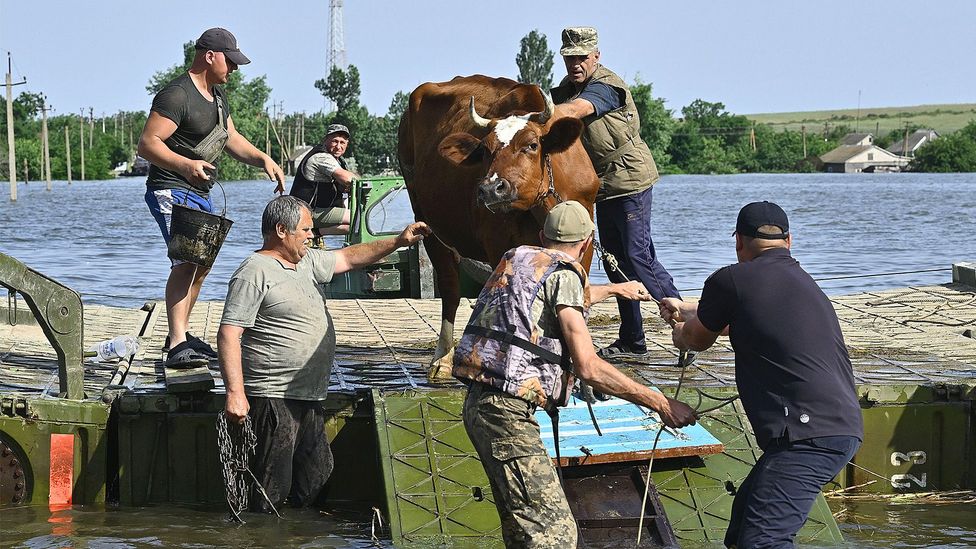
An estimated 18 cubic km (4.3 cubic miles) of reservoir water burst through the destroyed Kakhovka dam in Ukraine, causing widespread floods (Credit: Getty Images)
In the world of culture, the interest in the environmental consequences of war also appears to have grown. Ukraine’s pavilion at last year’s Venice Architecture Biennale reflected on terraforming defence structures and the impact of the war on the environment. Back in Ukraine, the country’s biggest art event, Kyiv Biennial 2023, featured an exhibition focused entirely on the Dnipro River, on which the Kakhovka dam was situated.
Like with many other causes, availability of funding is crucial to ensure the continuation of environmental efforts on the ground. But activists, scholars, and conservationists keep finding innovative ways to organise and raise funds despite the hardship. Among the most prominent examples is the Ukrainian Nature Conservation Group (UNCG)’s international campaign for the oldest nature reserve in Ukraine, Askania-Nova. UNCG is an NGO, and when Askania-Nova was occupied by the Russian military, they collected donations for the reserve. For almost a year, they were able to provide for the park’s maintenance and the large number of animals that inhabit it, including saiga antelope, onagers, Przewalski horses, American bison and red deer.
You might also like:
- The toxic legacy of the Ukraine war
- How the war in Ukraine is killing marine mammals
- Ecocide: Should killing nature be a crime?
In November 2023, UAnimals, one of the biggest animal welfare organisations in Ukraine even launched a charitable online shop called Animalism. The site sells T-shirts, scarves, jars, sweatshirts and other merchandise featuring endangered animals of Ukraine – and puts the money towards rescuing animals from the frontlines. It’s just one of many organisations raising funds for Ukraine’s animals during the war.
Environmental justice
In ways like the above, Ukrainians have demonstrated extraordinary civic mobilisation for the environment, and continue to fight for more environmentally just futures.
Sign up to Future Earth
Sometimes this can lead to internal debates within the country. For example, in the aftermath of the Kakhovka disaster, some environmentalists oppose plans by the government and Ukraine’s main state-owned hydro generating company, Ukrhydroenergo, to rebuild the dam. Environmentalists argue that the original construction of the dam in the 1950s severely damaged ecosystems and provided little economic and energy benefit. In July 2023, numerous organisations formed a civic coalition, Kakhovka Platform, to resist potential dam reconstruction and fight for the natural restoration of ecosystems instead. Ukraine’s Ministry of the Economy was contacted for comment, but didn’t respond by the time this article was published.
Ukraine is pushing to include “ecocide” in the crimes recognised by the Rome Statute of the International Criminal Court (Credit: Getty Images)
At the same time, internationally, Ukraine’s government is leading the fight to include “ecocide” in the crimes recognised by the Rome Statute of the International Criminal Court. As one of 13 countries that has an article for ecocide or intentional environmental crime in its Criminal Code (Article 441), cases such as the Kakhovka disaster and the mass death of cetaceans in the Black Sea are now being investigated by Ukraine’s Specialised Environmental Prosecutor’s Office. On 14 February 2024, the General Prosecutor Andriy Kostin announced that a Russian colonel general and four subordinates had been served notice of suspicion of the crime of ecocide. This was the first such charge in Ukraine.
Limits of working in times of war
As much as the new forms of green engagement are being developed in response to the destruction, however, ongoing Russian aggression is also setting limits on what can be achieved.
Environmental justice for Ukraine is dependent on the often less visible, often routine work of nature reserves, environmental researchers and organisations like UNCG in sustaining and expanding existing protected areas. But two years into the full-scale invasion, people in Ukraine are exhausted and resources are depleted. And “while the number of international grant opportunities has risen since February 2022, the number of grant recipients has shrunk”, says Oleksii Vasyliuk, a researcher at I. I. Schmalhausen Institute of Zoology, and chairman and co-founder of UNCG. “Many are in the army or left the country”, he says. “Part of the civic society is gone.”
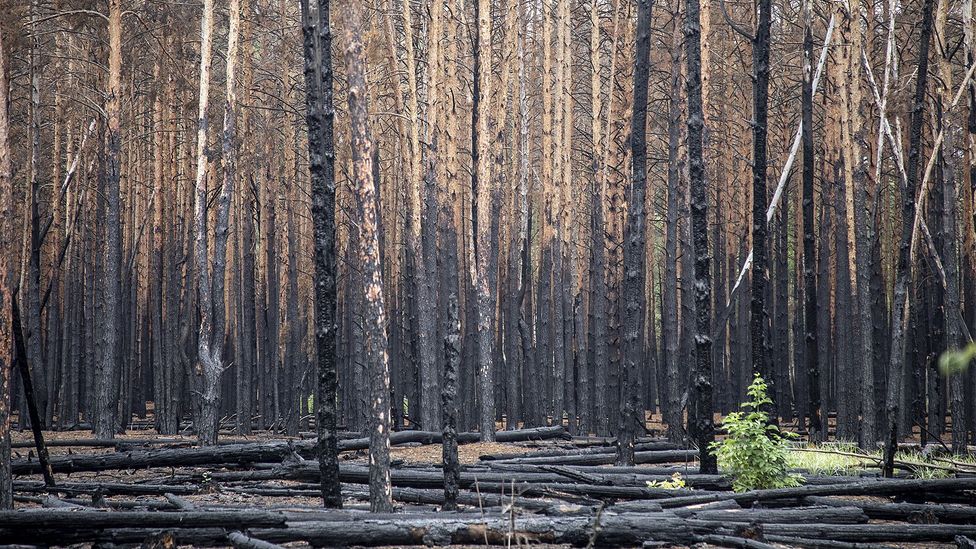
Around 2,000 environmentally protected areas in Ukraine have been under Russian occupation (Getty Images)
Many challenges that environmental scholars and conservationists face are the same as those before the full-scale invasion, such as poaching or illegal logging, but now they are often exacerbated. “On the international level you hear everywhere about ecocide, which is great, but if you look at the local level nothing has changed: entrepreneurs try to extract resources in protected areas, farmers who were displaced from the occupied territories try to find ways to plough protected areas,” says Vasyliuk. “In the conditions of the war, the business lobby is very active. When there is a choice between environmental values and business interests, most often the latter are prioritised.”
There are also new obstacles. Alongside the direct loss, occupation and destruction of conservation areas, those responsible for managing natural spaces must deal with shortages of staff, as well as loss of access to areas located near the borders with Belarus and Russia. Sometimes, the threats are directly felt by the conservationists. Last summer as part of my research, I interviewed an environmentalist whose reserve has been under the Russian occupation since the beginning of the full-scale invasion. It has been turned into a military base and is continuously burning, the environmentalist told me. He himself is in a place which is bombed almost weekly.
Carbon Count
For activists too, there are new challenges to civic organisation. “We cannot hold protests, most of our activists are in the armed forces, [and] a large part of information is unavailable due to the closure of access to public services, such as the State Land Registry,” says Inna Tymchenko, an associate professor in ecology at the Admiral Makarov National University of Shipbuilding in Mykolaiv who is also involved in environmental activism. “We also often have to work in dangerous conditions.”
Hope for a post-war future
From its experience of living with the consequences of the Chernobyl nuclear disaster, Ukraine knows only too well that environmental impacts are long-lasting and affects ecosystems beyond the state borders. There is a need for a long-term plan for environmental reparations and recovery, as well as sustainable structures for the work of environmentalists and environmental scholars on the ground.
With the civic society remaining strong and engaged in fighting for environmental justice, however, there are reasons for hope. In the past two years of Russia’s full-scale invasion, Ukraine has firmly put an environmental justice agenda at the heart of the country’s vision of post-war future. President Zelensky’s 10-point Peace Plan, which features environmental protection and ecocide accountability, is a prominent embodiment of this. Ukraine’s push for the international recognition of ecocide is another. So is the growing public awareness of the country’s own diverse ecosystems.
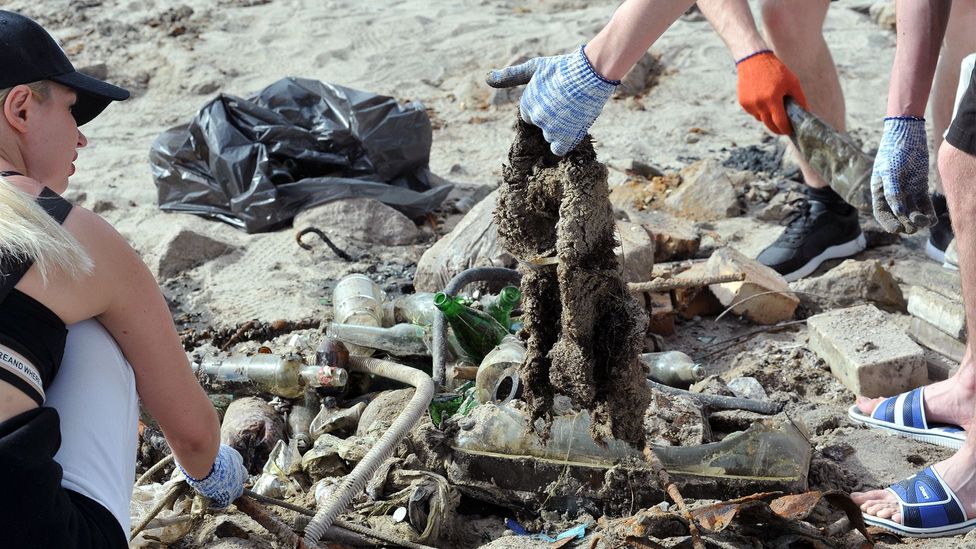
The destruction of the Kakhovka dam on 6 June 2023 swept dangerous debris downstream, including pollutants and unexploded mines (Credit: Getty Images)
Most Ukrainians had probably never heard about a sandy blind mole-rat before Kakhovka. Now that’s changed: the life and death of an endangered rat has become entangled with Ukraine’s resistance to the Russian aggression.
It is thus tempting to be hopeful for the environmental future today. Yet real environmental change can only come in a post-war future, and only if environmentalists are part of the post-war reconstruction. Today, any environmental work is dependent on the safety of Ukraine’s landscapes and everyone – human and non-human – who inhabit them.
*Darya Tsymbalyuk, PhD is an environmental humanities researcher from Ukraine. She is currently working on a book about the environmental impacts of Russia’s war on Ukraine, forthcoming with Polity Press.
—
Sign up to the Future Earth newsletter to get essential climate news and hopeful developments in your inbox every Tuesday from Carl Nasman. This email is currently available to non-UK readers. In the UK? Sign up for newsletters here.
If you liked this story, sign up for The Essential List newsletter – a handpicked selection of features, videos and can’t-miss news delivered to your inbox every Friday.
;
.jpg)
